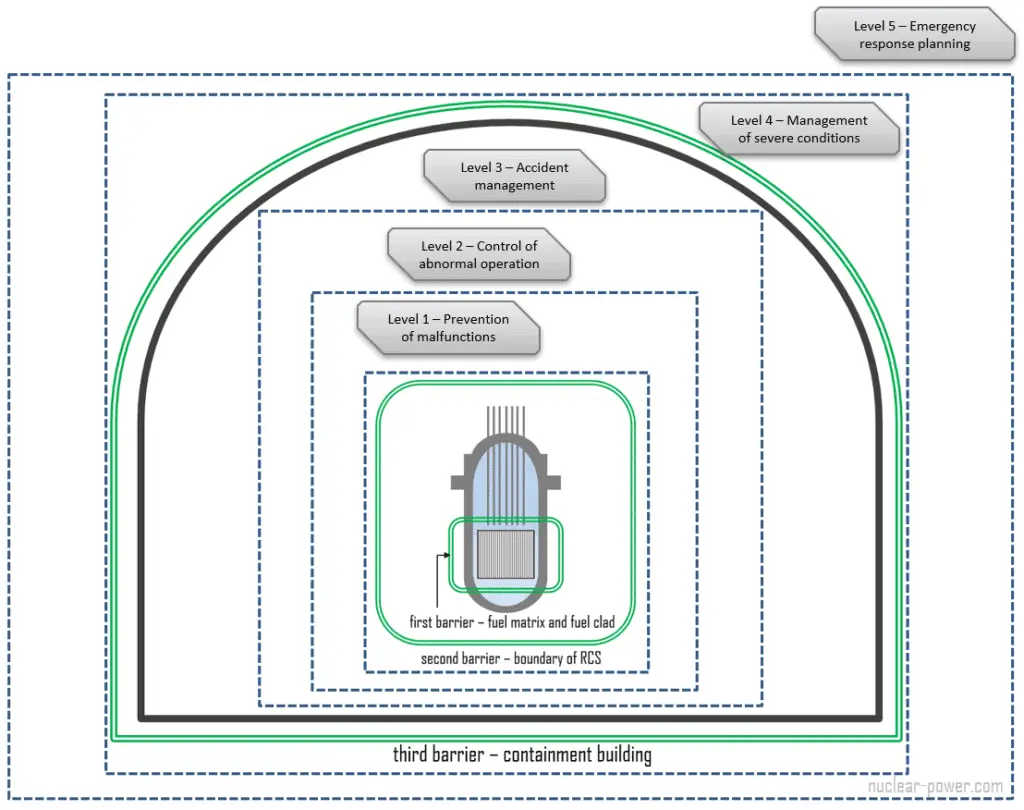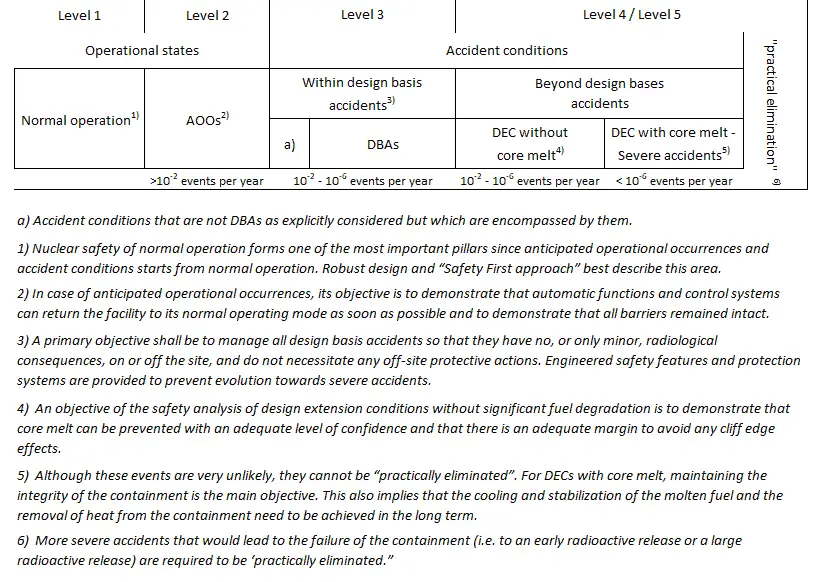Despite all the measures described above, radioactive releases may occur. Nuclear safety cannot exclude this probability. However, this probability is very low. The radiological consequences, in this case, depend on the type of event that led to releases and is also calculated based on the weather conditions. The purpose of the on-site emergency plan is to protect staff working at the site in the event of an incident or accident and to limit the off-site consequences of an accident. Measures for protecting the public from radioactive releases include off-site emergency plans prepared for each site. Public authorities implement the off-site emergency plan, which organizes emergency operations to limit public exposure to radiation in the event of releases.

The results are expressed in terms of effective doses from the radioactive releases (external and internal exposure), ground fallout, ingestion, and equivalent doses to the thyroid (primarily due to iodine).
The public-safety measures that can be implemented during the emergency phase are indicated in the offsite emergency plans. The prefect may consider many public-safety measures:
- Sheltering. Under some conditions, people may be instructed to take shelter in their homes, schools, or office buildings. Depending on the type of structure, sheltering can significantly reduce a person’s dose compared to remaining outside. Sheltering is a protective action that keeps people indoors, such as at home, the office, school, or a shopping mall, to reduce exposure to radioactive material.
- Ingestion of potassium-iodide tablets. Potassium-iodide (KI) is a compound that helps prevent the thyroid from absorbing radioactive iodine, one of several radioactive materials that could be present in a release from a nuclear power plant accident. If taken within the appropriate time and dosage, KI blocks the radioactive iodine from being absorbed by the thyroid gland and reduces the risk of thyroid cancers and other diseases. KI does not protect against any other inhaled radioactive materials, nor will it offer protection from external exposure to radiation.
Evacuation. Evacuation does not always mean emptying the pre-defined zone around a nuclear power plant. In most cases, releasing radioactive material from a plant during a major incident would move with the wind, not in all directions surrounding the plant. The release would also expand and become less concentrated as it travels away from a plant.
